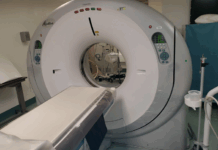In order not to re -plaster the walls, it is necessary that the plaster does not have defects and corresponds to permissible deviations. It is worth noting that to hide the defects of the plaster, you can use sliding glass partitions.
The most common defects of plaster:
— Cracks on the surface appear if a thin layer of plaster was applied; There is no mesh at the junctions; fat solution; rapid drying of plaster; If too wide boards were used in construction; If poorly flagrant lime was used in the solution, which continues to extinguish in plaster, while it releases heat, increasing in volume, thereby violating the layer of plaster.
— The roughness of the plaster appears due to poor-quality grout, as well as due to the use of a solution with large sand.
— Flasping the plaster occurs as a result of plastering surfaces without notches, which were not treated in dry weather from dust; plastering of wet surfaces; plastering surface without a grid.
— The solution does not compress and does not harden because gypsum was added when mixed, to the covered layer.
— Rusty stains occur as a result of plastering walls with a lime solution on a metal grid. It is better to plaster cement with a grid on a grid.
— The so -called «heights» can form on the surface of the plaster if any chemical additives containing salt were added to the solution.
— Mechanical damage may occur as a result of violation of the sequence of work.








